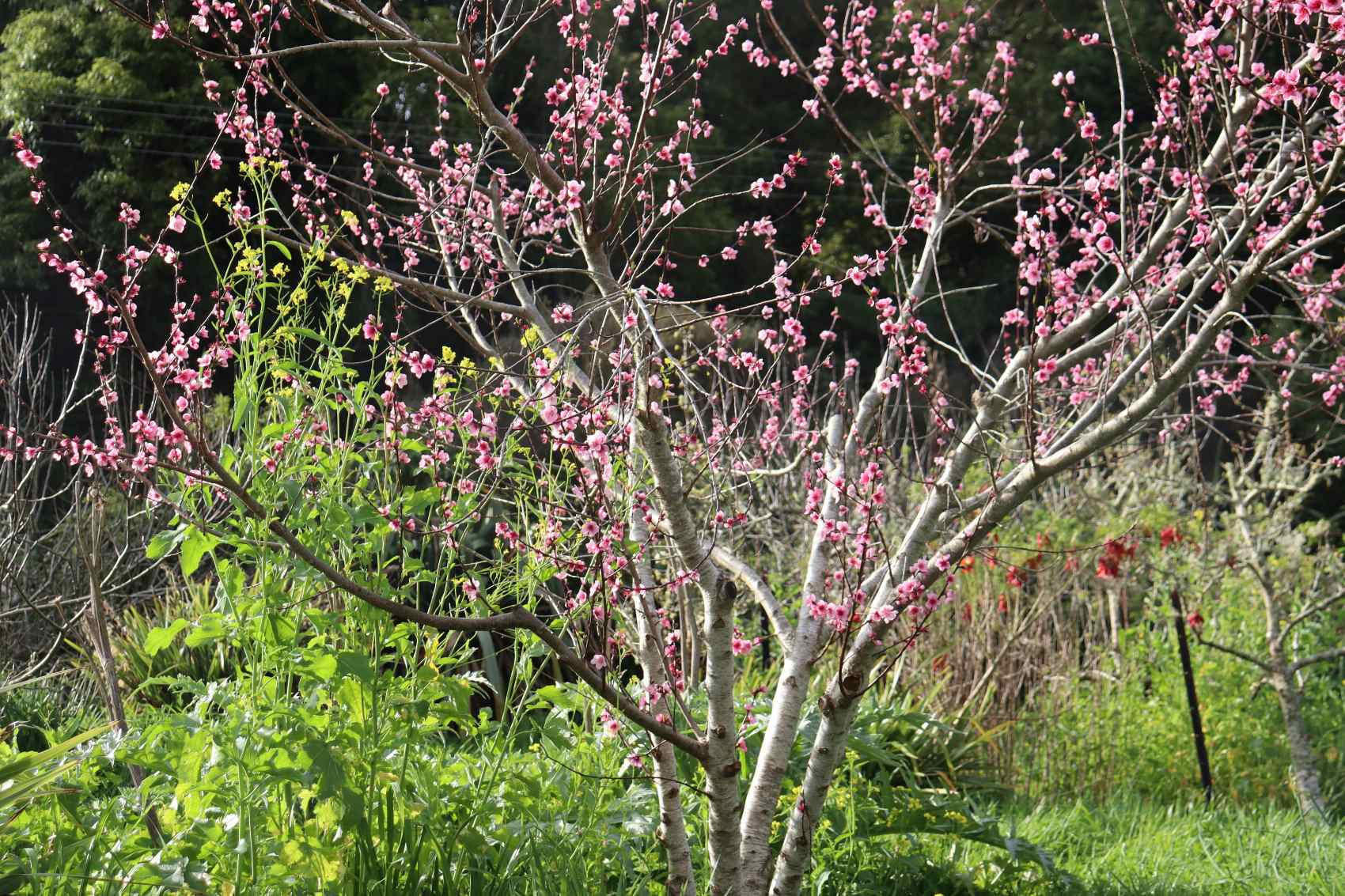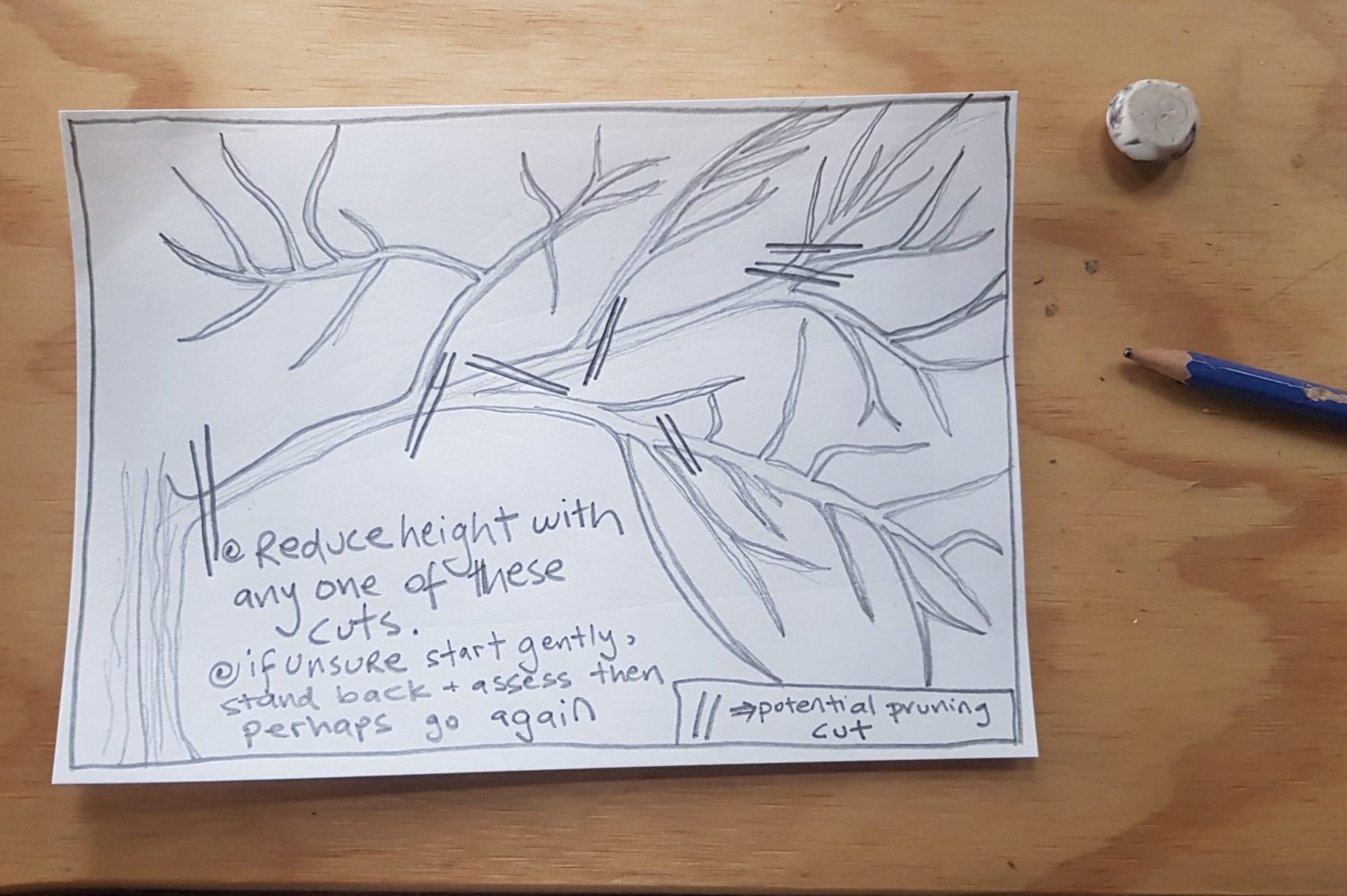A Spring Prune for Plums + Peaches


Stone fruit are naturally spreading trees, so for best shape and health – let them reach and spread as much as is practical, that being said if you've pruned hard in the past and ended up with loads of tall shoots, spring is an excellent time to tie them down or head back so as to fit birdnets on later.
When pruned in spring, trees respond with gentle growth because they’ve already used a chunk of energy up making blossoms and new shoots. There’s less fuel in the tank, so to speak. Use it to your advantage – though not as an excuse to go hard out! A few light snips may be all that's required.
As always, prune on a dry day. Begin by circumnavigating the tree to identify the tallest growths.
- If you can tie them down into gaps, do so.
- If you cannot tie them down because the tree is too cluttered, thinning cuts loom in your summer prune after harvest.
A pruning process

Hold the tallest branch in your sights and follow it back to where it meets the trunk.
- All along this branch will be intersections with side shoots or branches.
- Prune back to any one of these, until you’ve reduced the branch to a height that balances with the rest of the tree.
In this way go from one overly tall shoot to the next. Each will require a different treatment, and not all will need to be cut!
Clarity dawns when you step away from the tree, to assess each cut. Do not embarrass your tree with a bowl haircut – snipping equidistantly around the outside☺️
- If you feel timid, I encourage you to find one bold cut and make it! Your tree is a miracle, bursting with lifeforce and the will to grow. Pruning inspires shooting, it’s not the end!
- Over zealous pruners can challenge themselves in the opposite direction – take your time between each cut. Really see the tree. What can you allow and let go?
